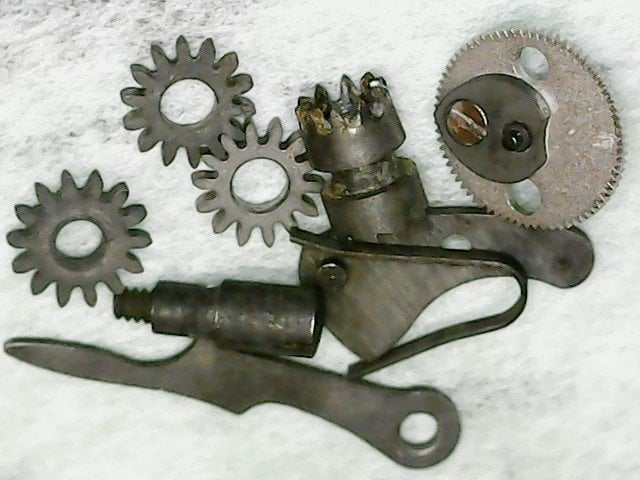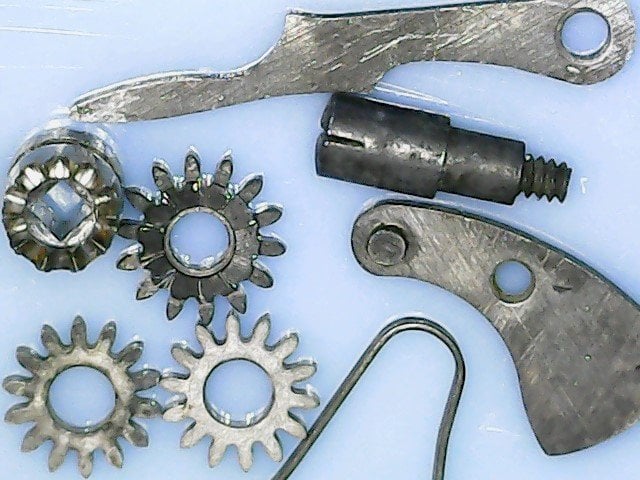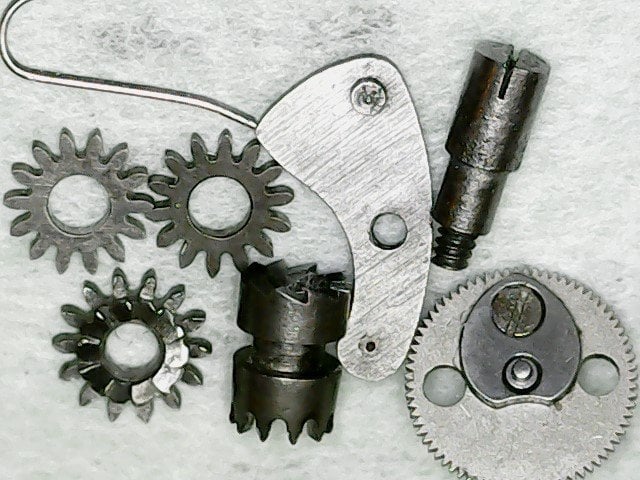BatDad
·Hi folks,
After a hiatus, I'm looking to pick up my watch rebuild project. Looking for some guidance to help set my expectations - specifcally with regards to results after cleaning.
I have the following keyless works parts - as you can see, they appear tarnished, and not at all 'shiny'.
After I put them through my cleaning process (3 jar, LR cleaning (10mins), LR ultrasonic rinser (2x 5mins)), should I expect these parts to be shiny and beautiful? Too my eyes they arent. They are cleaner in some regards but not what I was hoping for. The setting lever is a good example, and the setting screw didn't seem to change much at all.

The yoke was as tarnished as it was when it went in the machine, I attempted to scratch brush it and that seemed to brighten it up.There is a possibility that my cleaner is too old - it's about 2years old at this stage - but this was with new fluids from the bottle into the jars. (Unsure if cleaning effectiveness diminishes significantly over time)
So before I put everything back through the cleaning process - 'should' I be investing more time in precleaning. Or do parts like this need a presoak? I'd prefer not to have to order brand new parts to get them shiny, (in fact the hour recording runner was already a NOS purchase from ebay).
If they can't be made shiny, in general, is it 'best' to buy new, or is it likely they will work just fine?
many thanks for any guidance.
C
After a hiatus, I'm looking to pick up my watch rebuild project. Looking for some guidance to help set my expectations - specifcally with regards to results after cleaning.
I have the following keyless works parts - as you can see, they appear tarnished, and not at all 'shiny'.

After I put them through my cleaning process (3 jar, LR cleaning (10mins), LR ultrasonic rinser (2x 5mins)), should I expect these parts to be shiny and beautiful? Too my eyes they arent. They are cleaner in some regards but not what I was hoping for. The setting lever is a good example, and the setting screw didn't seem to change much at all.

The yoke was as tarnished as it was when it went in the machine, I attempted to scratch brush it and that seemed to brighten it up.There is a possibility that my cleaner is too old - it's about 2years old at this stage - but this was with new fluids from the bottle into the jars. (Unsure if cleaning effectiveness diminishes significantly over time)
So before I put everything back through the cleaning process - 'should' I be investing more time in precleaning. Or do parts like this need a presoak? I'd prefer not to have to order brand new parts to get them shiny, (in fact the hour recording runner was already a NOS purchase from ebay).
If they can't be made shiny, in general, is it 'best' to buy new, or is it likely they will work just fine?
many thanks for any guidance.
C
